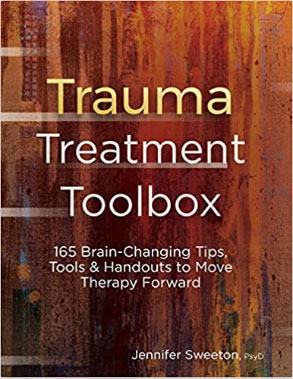07 Jul Prolonged Exposure Therapy Skills: A Step-By-Step Approach

Prolonged Exposure (PE) has been established as an evidence-based therapy for the treatment of PTSD, and is a therapeutic approach that has shown some of the strongest clinical outcomes. Watch this hands-on, experiential training, and become fluent and confident in your knowledge on know how to integrate Exposure Therapy skills into your practice to help traumatized clients!
This two-day, intensive online recording introduces attendees to Prolonged Exposure Therapy Approach, and provides step-by-step training in this exposure-based modality. All materials, including instructions for key PE skills, are included with your registration!
The Prolonged Exposure approach is the most effective treatment available for PTSD and other anxiety disorders. The theory behind PE is well supported, and few mental health treatments enjoy more scientific support than this one. Unfortunately, PE is not used by most practitioners, leading clients with PTSD and other anxiety disorders to suffer needlessly while less adequate treatments or only medical approaches are applied to their care.
If you attended Dr Sweeton’s other presentations about EMDR, Neuroscience of Trauma or other modalities and topics then this presentation will add to your confidence as a clinician, and will delve into the actual step-by-step PE techniques in more depth. You will leave with a toolbox full of techniques ready to apply the very next day that you see clients. If you want to achieve fast and positive outcomes with your clients then this is a workshop that you will not want to miss!
The target audience for this event includes psychologists, social workers, counselors, MFT’s, and other clinical mental health professionals.


This training will provide participants clinical knowledge and tools to
a). State the DSM-5 PTSD criteria.
b). Describe the Emotional Processing Theory.
c). Name one risk of PE.
d). State at least two areas of the brain that exposure therapy targets.
e). Discuss at least one PTSD assessment tool.
f). Name the five steps of the Trauma Treatment Roadmap.
g). Describe how to identify the “index trauma.”
h). State the rationale for in vivo exposure.
i). Name at least two common reactions to trauma.
j). Describe the difference between imaginal and in vivo exposure.
k). Define “hot spot” and discuss its relevance in PE.
l). Name one other therapeutic approach PE may be integrated with.
Course Outline:
- Introduction to Prolonged Exposure
- PE in a nutshell
- PE and the Emotional Processing Theory
- Who PE was designed for
- Research supporting PE as an evidence-based therapy for PTSD
- Risks and contraindications
- Diagnosing PTSD and other trauma- or stressor-related disorders
- DSM-5 criteria
- Cultural considerations
- Brain science of trauma and exposure therapy
- Amygdala
- Hippocampus
- Insula
- Cortical areas
- Assessment/screening tools
- Primary Care PTSD Screen
- PCL-5
- IES-R
- CAPS-5
- Trauma Treatment Roadmap
- Bottom-up vs top-down approaches
- Stabilization and grounding
- Where PE fits into the roadmap
- Preparing for PE
- Assessing for readiness
- Motivational interviewing techniques
- Psychoeducation about trauma processing
- Therapeutic alliance
- PE: Session 1 step-by-step
- Psychoeducation about PE
- Trauma interview
- Identifying the index trauma
- Breathing retraining technique
- PE: Session 2 step-by-step
- Common reactions to trauma
- Psychoeducation about in vivo exposure
- In vivo exposure fear hierarchy
- Homework assignments related to in vivo exposure
- PE: Exposure sessions 3+ step-by-step
- Imaginal exposure to the traumatic event: step-by-step
- SUDS, symptom monitoring, and stabilization
- Managing hot spots
- Processing of the exposure
- In vivo exposure progress
- PE: Final session
- Final assessment
- Progress review
- Relapse prevention
- Determining next steps in therapy
- PE modifications
- Extending session length and/or increasing/decreasing frequency
- TBI
- Moral injury
- Other modifications
- Integrating PE with other treatment modalities
- EMDR
- Cognitive Processing Therapy
- Other cognitive behavioural approaches


This online workshop will give you instant access to 8 sessions of video content, accessible via streaming on our website, as well as downloads for supplemental materials. You can view the course content in your own time, there is no time limit on access.
The duration of this workshop is 11 learning hours.
Please click the green ‘Mark Complete’ button on each module as you progress. A certificate of completion will be generated upon finishing the course and completing a short assessment quiz. If the certificate is not showing, please confirm you have marked all sections as ‘Complete’. Please consult your professional organisation/association to confirm whether you are able to claim any CPD points/hours for this online workshop.



 Dr. Jennifer Sweeton is a clinical psychologist, best-selling author, and internationally-recognized expert on anxiety and trauma, and the neuroscience of mental health. She completed her doctoral training at the Stanford University School of Medicine, the Pacific Graduate School of Psychology (now Palo Alto University), and the National Center for PTSD. Additionally, she holds a master’s degree in affective neuroscience from Stanford University, and studied behavioral genetics at Harvard University.
Dr. Jennifer Sweeton is a clinical psychologist, best-selling author, and internationally-recognized expert on anxiety and trauma, and the neuroscience of mental health. She completed her doctoral training at the Stanford University School of Medicine, the Pacific Graduate School of Psychology (now Palo Alto University), and the National Center for PTSD. Additionally, she holds a master’s degree in affective neuroscience from Stanford University, and studied behavioral genetics at Harvard University.